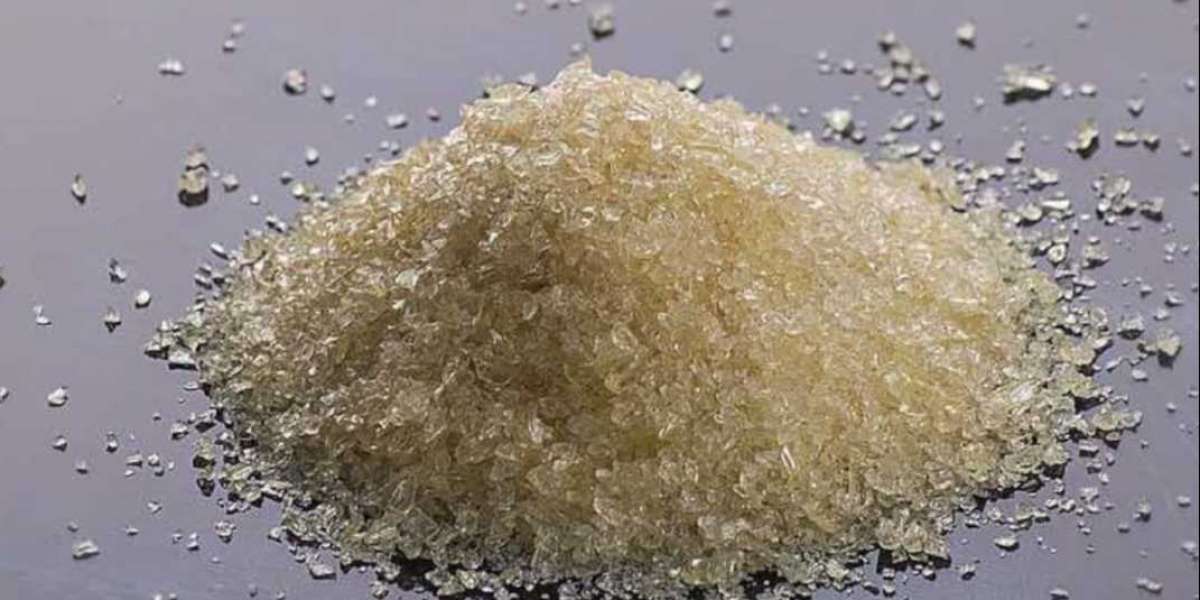Introduction
Dinitrochlorobenzene (DNCB), specifically 2,4-Dinitrochlorobenzene, is a yellow, crystalline organic compound with the chemical formula (O2N)2C6H3Cl. It is highly soluble in various organic solvents and possesses a distinct almond-like odor. Industrially, DNCB serves primarily as a crucial intermediate in the synthesis of a wide array of other compounds. Its structure, featuring a benzene ring with a chlorine atom and two strongly electron-withdrawing nitro groups, makes the chlorine atom highly susceptible to nucleophilic substitution reactions. This reactivity allows for its transformation into various dyes, pigments, pesticides, and pharmaceutical intermediates. Beyond its chemical synthesis applications, DNCB is also notable in medical research, particularly for its ability to induce a delayed-type hypersensitivity (DTH) immune response in humans. This property makes it a valuable tool for assessing T-cell activity in immunocompromised patients and studying conditions like allergic contact dermatitis.
The Dinitrochlorobenzene (DNCB) industry is primarily driven by its indispensable role as a key chemical intermediate in the production of various downstream products across several crucial sectors. The largest driver is its extensive application in the dyes and pigments industry, particularly as a precursor for sulfur black dye, which accounts for a significant portion of its consumption. The continuous growth of the textile industry globally, especially in emerging economies, directly fuels this demand. Furthermore, DNCB's critical function as an intermediate in the synthesis of various pharmaceutical compounds and agrochemicals (pesticides, herbicides) also contributes significantly to market growth. The increasing demand for advanced formulations in these sectors, requiring precise chemical building blocks, sustains DNCB's relevance. Looking ahead, several key trends are shaping the industry. There's an ongoing focus on optimizing production processes for DNCB to improve efficiency, reduce costs, and enhance safety, given the hazardous nature of handling nitroaromatic compounds. While its use in certain medical diagnostics is specialized, the broader market is driven by the expansion of manufacturing capabilities in the fine chemicals and specialty chemicals sectors, particularly in Asia. The market also sees influences from the volatility of raw material prices (like nitric acid and chlorobenzene) and global trade dynamics, including tariffs and logistical challenges. The drive towards new and more complex chemical structures in pharmaceuticals and agrochemicals means DNCB, with its reactive chlorine, remains a valuable starting material.
Project Scope and Overview
IMARC’s new report titled “Dinitrochlorobenzene Manufacturing Plant Project Report 2025: Industry Trends, Plant Setup, Machinery, Raw Materials, Investment Opportunities, Cost and Revenue,” provides a comprehensive roadmap for setting up a dinitrochlorobenzene manufacturing plant. The study encompasses all the essential information needed to enter the dinitrochlorobenzene industry, including a detailed dinitrochlorobenzene manufacturing plant feasibility report to assess the viability of the project. This report offers an in-depth evaluation of the dinitrochlorobenzene manufacturing plant cost, enabling readers to understand recurring operational expenditures and return on investment. It is a valuable resource for entrepreneurs, investors, researchers, consultants, business strategists, and anyone with an interest or stake in the dinitrochlorobenzene sector. Moreover, it explains how to start a dinitrochlorobenzene manufacturing plant, outlining the plant setup cost and guiding users through the capital planning and resource allocation stages essential for launching production effectively.
Manufacturing Process and Technical Workflow
This report offers detailed information related to the process flow and the unit operations involved in a dinitrochlorobenzene manufacturing plant project. Moreover, information related to raw material requirements and mass balance has further been provided in the report with a list of necessary technical tests as well as quality assurance criteria.
Aspects Covered
- Product Overview
- Unit Operations Involved
- Mass Balance and Raw Material Requirements
- Quality Assurance Criteria
- Technical Tests
Request for a Sample Report: https://www.imarcgroup.com/dinitrochlorobenzene-manufacturing-plant-project-report/requestsample
Infrastructure and Setup Requirements
This section presents a comprehensive analysis of key considerations involved in establishing a dinitrochlorobenzene manufacturing plant. It covers critical aspects such as land location, selection criteria, strategic significance of the site, environmental impact, and associated land acquisition costs. In addition, the report outlines the proposed plant layout along with the primary factors influencing its design. Furthermore, it provides detailed insights into various operational requirements and expenditures, including those related to packaging, utilities, machinery, transportation, raw materials, and human resources.
- Land, Location and Site Development
- Plant Layout
- Machinery Requirements and Costs
- Raw Material Requirements and Costs
- Packaging Requirements and Costs
- Transportation Requirements and Costs
- Utility Requirements and Costs
- Human Resource Requirements and Costs
Browse the Full Report with the Table of Contents: https://www.imarcgroup.com/dinitrochlorobenzene-manufacturing-plant-project-report
Financial Projections and Economic Viability
This section provides a comprehensive economic analysis for establishing a dinitrochlorobenzene manufacturing plant. It encompasses a detailed evaluation of capital expenditure (CapEx), operating expenditure (OpEx), taxation, and depreciation. Additionally, the report includes profitability analysis, payback period estimation, net present value (NPV), projected income statements, liquidity assessment, and in-depth examinations of financial uncertainty and sensitivity parameters.
- Capital Investments
- Operating Costs
- Expenditure Projections
- Revenue Projections
- Taxation and Depreciation
- Profit Projections
- Financial Analysis
Key Considerations for Plant Design and Operations:
Production Capacity:
The selection of machinery and the design of the plant layout should be aligned with the intended scale of production, which may vary from small-scale operations to large industrial facilities. This alignment ensures optimal utilization of space, resources, and production capabilities.
Automation Levels:
The degree of automation should be adjusted based on factors such as labor availability, budget constraints, and the level of technical expertise. Options may range from semi-automated systems to fully automated solutions, allowing for flexibility in capital investment and operational efficiency.
Location Adaptation:
Plant location should be strategically selected to align with local market demand, ensure proximity to raw material sources, leverage available labor, and comply with regional regulatory requirements. These factors collectively contribute to improved operational efficiency and cost optimization.
Product Flexibility:
The plant should be equipped with processes and machinery capable of accommodating a variety of product specifications. This flexibility enables manufacturers to respond to diverse and evolving market demands effectively.
Sustainability Features:
Incorporating sustainable practices is essential. This includes the integration of renewable energy sources, implementation of efficient waste management systems, and use of energy-efficient machinery to meet environmental standards and long-term sustainability objectives.
Raw Material Sourcing:
The supply chain strategy should be customized to ensure reliable and cost-effective sourcing of raw materials. This approach should consider client-specific requirements and regional supply dynamics to maintain consistent production and manage input costs.
About Us: IMARC Group is a leading global market research and management consulting firm. We specialize in helping organizations identify opportunities, mitigate risks, and create impactful business strategies.
Our expertise includes:
- Market Entry and Expansion Strategy
- Feasibility Studies and Business Planning
- Company Incorporation and Factory Setup Support
- Regulatory and Licensing Navigation
- Competitive Analysis and Benchmarking
- Procurement and Supply Chain Research
- Branding, Marketing, and Sales Strategy
Contact Us:
IMARC Group
134 N 4th St. Brooklyn, NY 11249, USA
Email: sales@imarcgroup.com
Tel No:(D) +91 120 433 0800
United States: +1-631-791-1145







